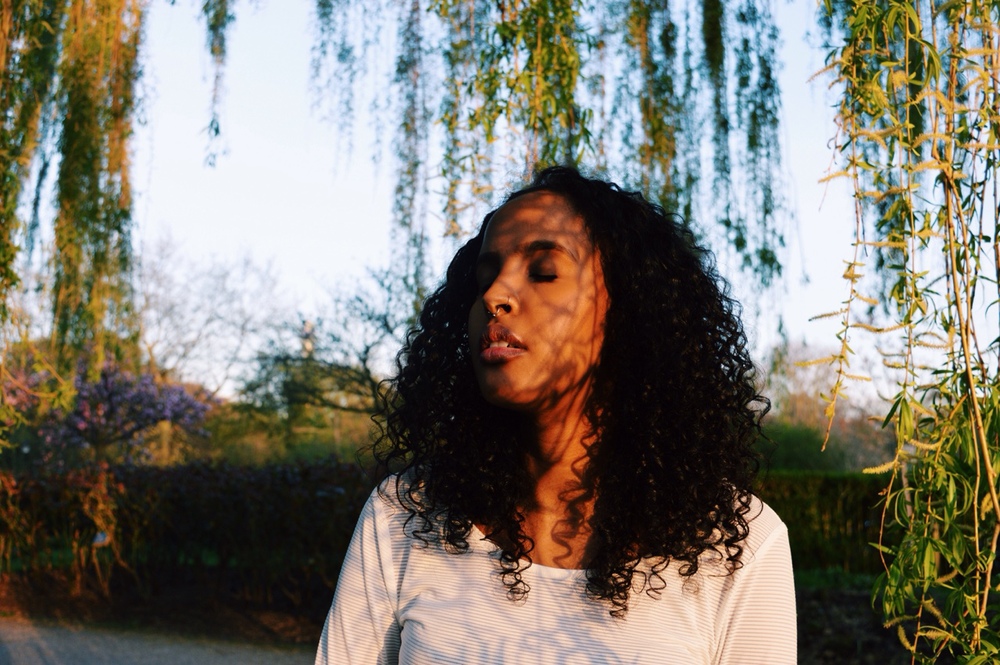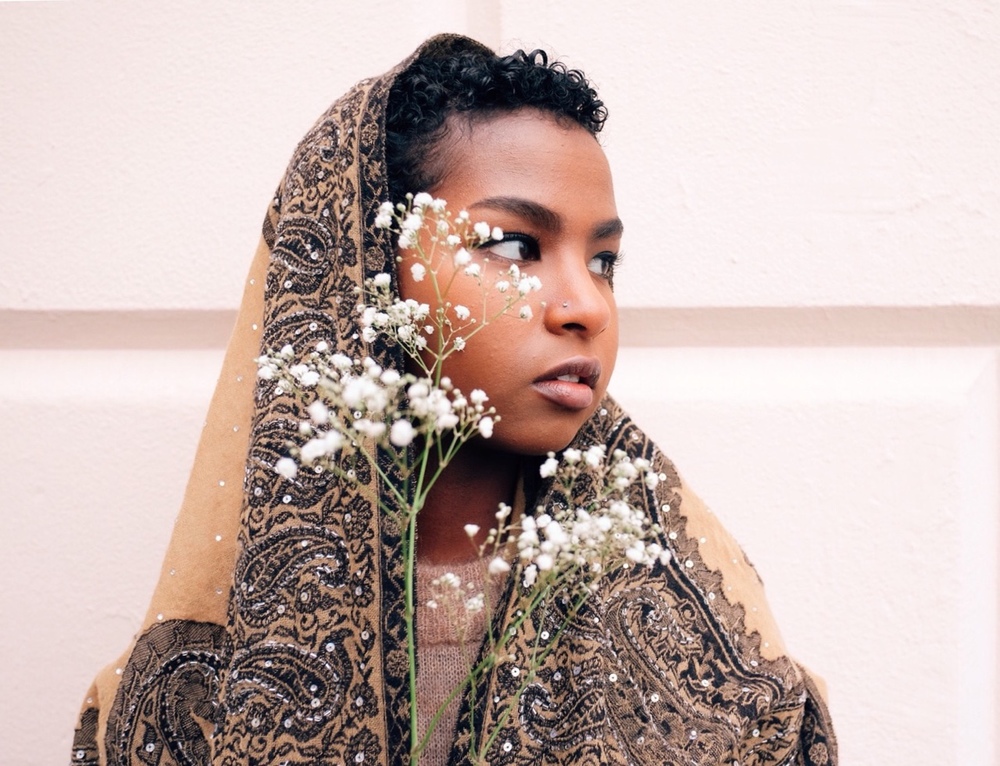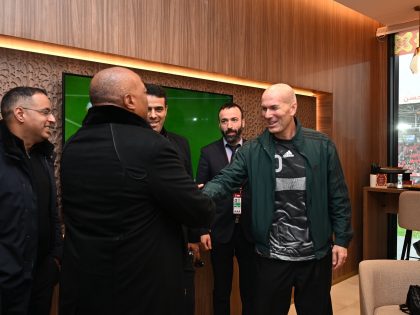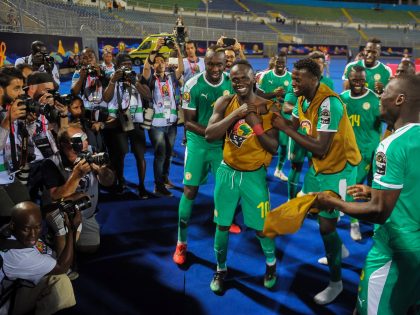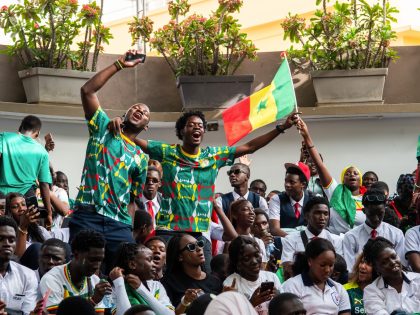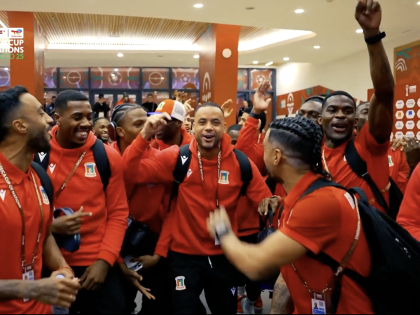Fresh Eyes: Amaal Said’s portraits of belonging

“Images”, as the Chilean visual artist Alfredo Jaar has said, “are not innocent.” From their creation, to their distribution to their interpretation, images are conveyors of power and influence. While traditional media channels have been consolidated in the hands of a few, the rise of the Internet has offered people unprecedented means to access and publish visual content.
As a more inclusive image-delivery outlet, the web has offered diverse, creative visions a place to thrive, visions which had previously been rendered nearly invisible by parochial corporate media architecture. Developing her work in this new cultural wave is the photographer/poet Amaal Said. Born in Denmark to Somali parents and having came of age in London where she now lives, Said has created space in the digital landscape to offer humanizing photographs and poems of people in her community, frequently young people of the diaspora who are far too often under- or misrepresented.
One only has to do a Google image search for the words “beauty” or “immigration” to see the dominant narratives Western audiences are usually subjected to. In contrast, through her deeply intimate portraits, Said captures lives in plain sight (including her own), and in so doing, expands her viewers’ very understanding of beauty, belonging, migration and youth through perceived similarities and differences.
Just as photographic film was not originally designed to capture the details of darker skin and had to be recalibrated, so too must our minds be recalibrated with an enhanced sense of visual and cultural literacy. In the same vein, Dorothea Lange once said, “The camera is an instrument that teaches people to see without a camera.” In these troubled cultural times, this is precisely why Said’s counter-narratives are so powerful and necessary.
Africa is a Country spoke to Amaal Said to learn more about her creative vision.
AIAC: Your photographs are remarkable in how they challenge and evolve notions of beauty in mainstream Western media by featuring intimate portraits of melanin-rich young people – with piercings, in headscarves and with natural hair. What experiences inform and shape the content of your photographs?
Amaal Said: I try my hardest to keep close to beauty. I grew up in a neighbourhood referred to as a ghetto in Odense, Denmark. I went back two years ago and all I can remember is how many shades of green I saw. I wish I had captured more of it. My own memories of Odense are at odds with what I read about it and hear from family. It’s always been a beautiful place to me, which doesn’t mean that a lot of sadness and tragedy didn’t happen there, it just means that both elements can exist at the same time.
I’ve spent most of my life in London and I’ve had the pleasure of being in communities with other artists who are doing really important work in the world. I never felt alone in that case. Negative opinions of the countries we came from and the communities we lived in existed. I was in classrooms with other children who claimed that people that looked like me were dirty immigrants who stole jobs and cheated the system. I feel like I spent a lot of time at secondary school fighting people’s opinions. And I’m not in those particular classrooms anymore, but I’m still trying to combat those negative portrayals.
I never saw the documenting I did as particularly hard work. I asked to take people’s pictures because I found them beautiful, because I recognised myself in them. I realise now how important the work is and how necessary it is to push against the images that do not represent us in our best light.
There are certain signatures in your portraits; natural elements, shadows, graceful everyday moments. What do you look for in an image?
There’s a huge contrast between my expectations of the photos I want to capture and the actual pictures I end up taking. There are thoughts that come to mind when I think of photographing a person. There are ways I imagine that I can photograph them while keeping their own personality in mind. My plans completely went out of the window when I would take the pictures. I’m always surprised at what I capture.
There are new obsessions all of the time, but I am fascinated by shadows at the moment. I love the feel of the photo and I find capturing something as fleeting as a shadow exciting. I gravitate towards bright colours. I’m interested in how colours clash, what works together and what doesn’t, and what it says about the person I’m photographing.
I’ve been drawn to parks more recently. I go on a walk with the person I’m photographing and we see what we can find. The walking was necessary because it allowed the person I was photographing to get comfortable with me, instead of getting straight to it. It’s incredible when I go through the pictures we just took, how it doesn’t look like we’re in London at times, but somewhere else where it’s greener and sunnier. It’s a form of escape in a way.
You moved a number of times during your childhood. Is there a search for home and belonging that manifests itself in your images?
It’s definitely what drew me to photography in the first place. It was the homelessness I felt. I took the picture and I rooted myself somewhere. I photograph because I’m frightened of forgetting people, places and how I feel. What connects me to the people I photograph is how we’re still trying to figure out where and what home is.
There was a sense of guilt for a long time about the feeling of displacement. My parents had left their home because they wanted to give me a safe one. What does it mean to be in a so-called ‘safe’ country but not feel at home? Photography became another form of touch, a way to reach out and connect with people. My parents never really got why I chose to take pictures of people. It’s been my way of defying the feeling of displacement I didn’t know what to do with.
What has been the social response to your work?
I’m still so surprised at all of the love I’ve received. The responses that are the closest to my heart are the ones from the women that I have photographed. My friends have thanked me for capturing so many different parts of their personality, for making them feel beautiful.
The awe that they have when they see themselves also makes me feel very warm inside. I know that I stopped taking pictures of myself for a long time because I didn’t feel beautiful. I always felt that I wasn’t the same as the person in the photograph. I feel like I’ve done a good job when the person I’ve photographed recognises themself, when they are in awe because of their own beauty.
As for a broader social response, I’m so glad that it goes beyond just beauty and that people realise how necessary honest representation is. It’s important that we are documented in an intimate way. I consider myself a storyteller first and everything else is an extension of that.
You have a series called “Proving our existence” which features young diaspora women holding photographs of older generations. What relationships and memories are encapsulated in the grasp of those old images?
There’s a reliance on family archive images that I only paid attention to this year. I didn’t realise how often I went back to my mother’s closet to pull out the bag with all of our childhood pictures. I remember being teary-eyed over a picture of my father in his teens. It was diagonally folded and looked like it would rip. Then there are the pictures of my mother that I placed on my desk next to my books, the ones where she wore the dresses that she said all the other girls wanted.
I sat with a friend in a coffee shop and she explained how all of her family pictures had been stolen. I couldn’t imagine losing all the pictures I came back to so often. I do not have my own memories of Somalia, but I’ve used my parents’ pictures to try and fill a void I felt. I started having conversations with friends about the pictures we took across continents with us, how communication occurs through pictures as well as language.
I asked them to bring a picture from the archives that had travelled with them or had been sent over. I asked how they related to the person in the picture, how that person informed their own existence, why they had kept the image and other questions. It made me want to continue taking pictures. I realise how important it is to have pictures to pass on to others.
In addition to being a photographer you are also a poet, which explains why there is such a strong visual poetry to the sequences of images you present. Does your lyricism of the written word influence your visual art and vice versa?
I feel like I’m trying to write a very long poem when I’m a taking picture. There’s always a story being told, which I may not be aware of until I look back at the pictures. I love capturing movement, being present with a person and allowing them to move in a way that they want. There are the closed-eye moments that I especially cherish. A person asked me once how I got people to close their eyes around me. I realise now that there’s a sense of vulnerability and trust involved. It reminds me of being on a stage and telling people my shame, the family secrets I was supposed to keep a secret, the condition of my own heart.
There were events in my life that kept moving full speed ahead that I tried to stop by sitting down and writing about it. I tried to describe the moment’s power, how I felt, how it changed me. There is so much that I can’t get across with the written word, so much that I want to say that I can’t write out because it hurts too much. Sometimes it’s easier to take the picture. I had to take the pictures for the ‘proving my existence’ project before I could try and write about the first and last phone conversation to my grandmother in Kenya before she died. I kept repeating ‘I’m fine’ because my Somali refused to stretch further. That’s why I chose to take the pictures of my aunts and my mother, because I didn’t have the language at the time to try and bridge the gap between us.
I’ve used both forms as healing. I turned to writing when I was young and hurt, when I was learning English and feeling lost in a classroom with nobody that understood me. Photography has helped me to get out of myself, reach out to others. I’m usually haunted by the pictures I didn’t take because I was too far away from the camera or perhaps not brave enough to point the camera and capture the moment. I told a friend about it and he said, ‘turn the picture you didn’t take into a poem.’ Sometimes both forms blur into one another in my head. I can’t separate the two.
You shoot some of your work with a film camera. What are the special qualities that draw you to film?
I wish I used film more often. There’s a feeling that I get from using a film camera that I don’t get from a digital. Much of it stems from the excitement of having only a couple of shots and having to get it right. It forces me to be more focused, to also trust myself more. And then it’s also about getting the prints of film back and remembering the exact moment I took it. There’s a nostalgia that I feel. I remember the weight of my father’s film camera and wishing he had kept it and continued photographing us. My mother insists on a film camera too, she’s frightened of losing digital files and doesn’t trust the computer. She likes the pictures in her hand. I feel the same way.
How do you see your work continuing to evolve?
There are so many projects that I want to work on. There are things I’ve been struggling to write that I want to explore through photography. I want to experiment more with film photography. I want to continue being as honest as I can possibly be, connecting with more people as well as travelling. London feels so small all of the sudden. I feel a huge responsibility to continue the work, to follow it wherever it wants to take me.
Find more of Amaal Said’s work at amaalsaid.com and instagram.com/amaalsaid
